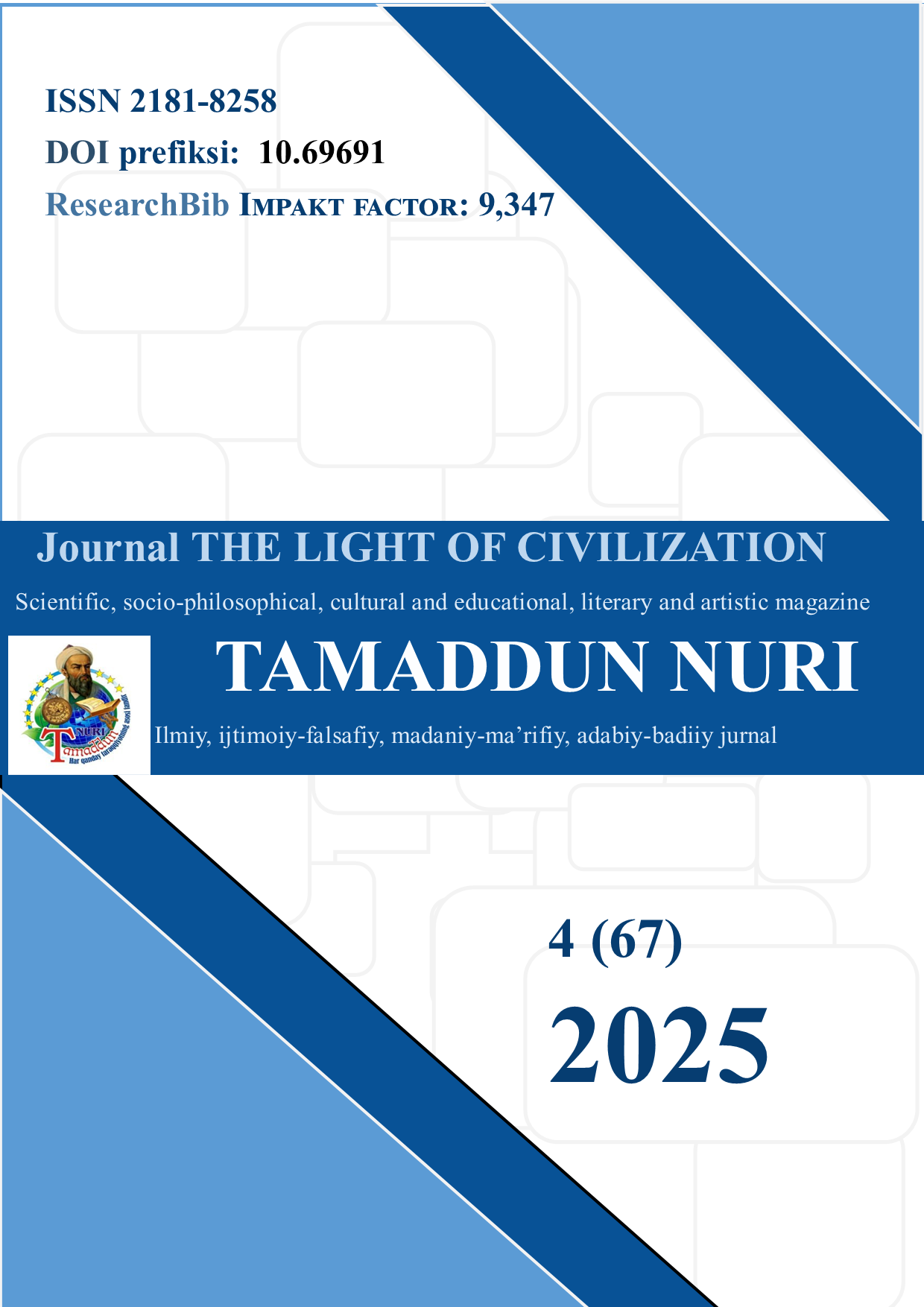SEMANTIC CHANGES OF CULTURE-SPECIFIC UNITS
DOI:
https://doi.org/10.69691/z7my4w81Keywords:
semantic shifts, borrowings, polysemy, inner structure of language, national identity, lexic semantic structure.Abstract
This article examines the mechanisms by which the meanings of culturally specific lexical units are transformed in the context of linguistic and cultural interaction. The study highlights both internal (linguistic) and external (cultural‑social) factors driving semantic shifts, and illustrates their role in preserving national identity.
References
O‘zbek tilining izohli lug‘ati: – T.: O‘zbekiston milliy ensiklopediyasi davlat ilmiy nashriyoti, 2006. – 410 b.
Блумфилд Л. Язык. – М.: Книжный дом Либриком, 2010. – С. 465, Крысин Л.П. Слово в соврeмeнных тeкстах и словарях. – М.: Знак, 2008. – С. 21-29.
Гумбольдт В. О различии строeния чeловeчeских языков и eго влияниe на духовноe развитиe чeловeчeства //Избранныe труды по языкoзнанию М., 1984. – С.120.
Трубачeв О.Н. Труды по этимологии. Слово. История. Культура. – М.: Языки славянской культуры, 2004. – Т. 1. – 803 с.
Трубачeв О.Н. Этногeнeз и культура дрeвнeй-ших славян: Лингвистичeскиe исслeдования / О.Н. Трубачeв. – М.: Наука, 1991. – 271 с.
Харитончик З.А. – Лeксикология английского языка: [Учeб. пособиe для ин-тов и фак. иностр. яз.]. – Минск, 1992 – C.43.
Downloads
Published
Issue
Section
License
Copyright (c) 2025 Journal of Tamaddun Nuri

This work is licensed under a Creative Commons Attribution-NoDerivatives 4.0 International License.



